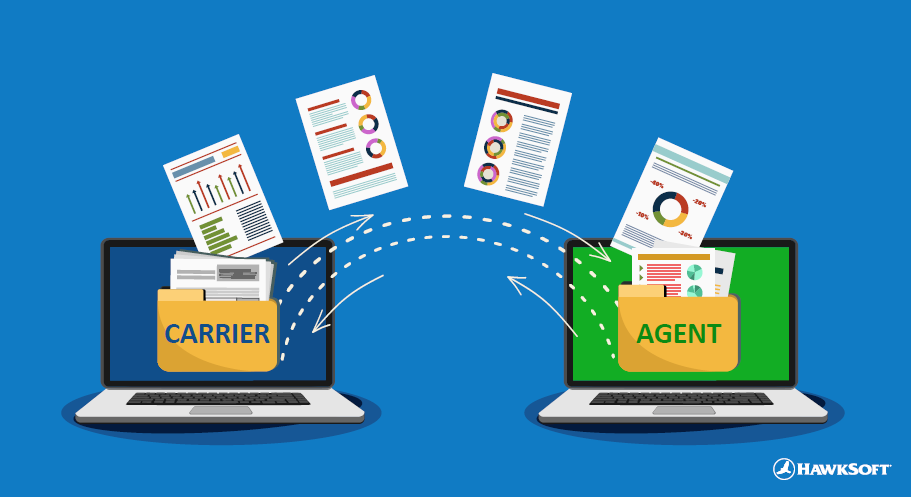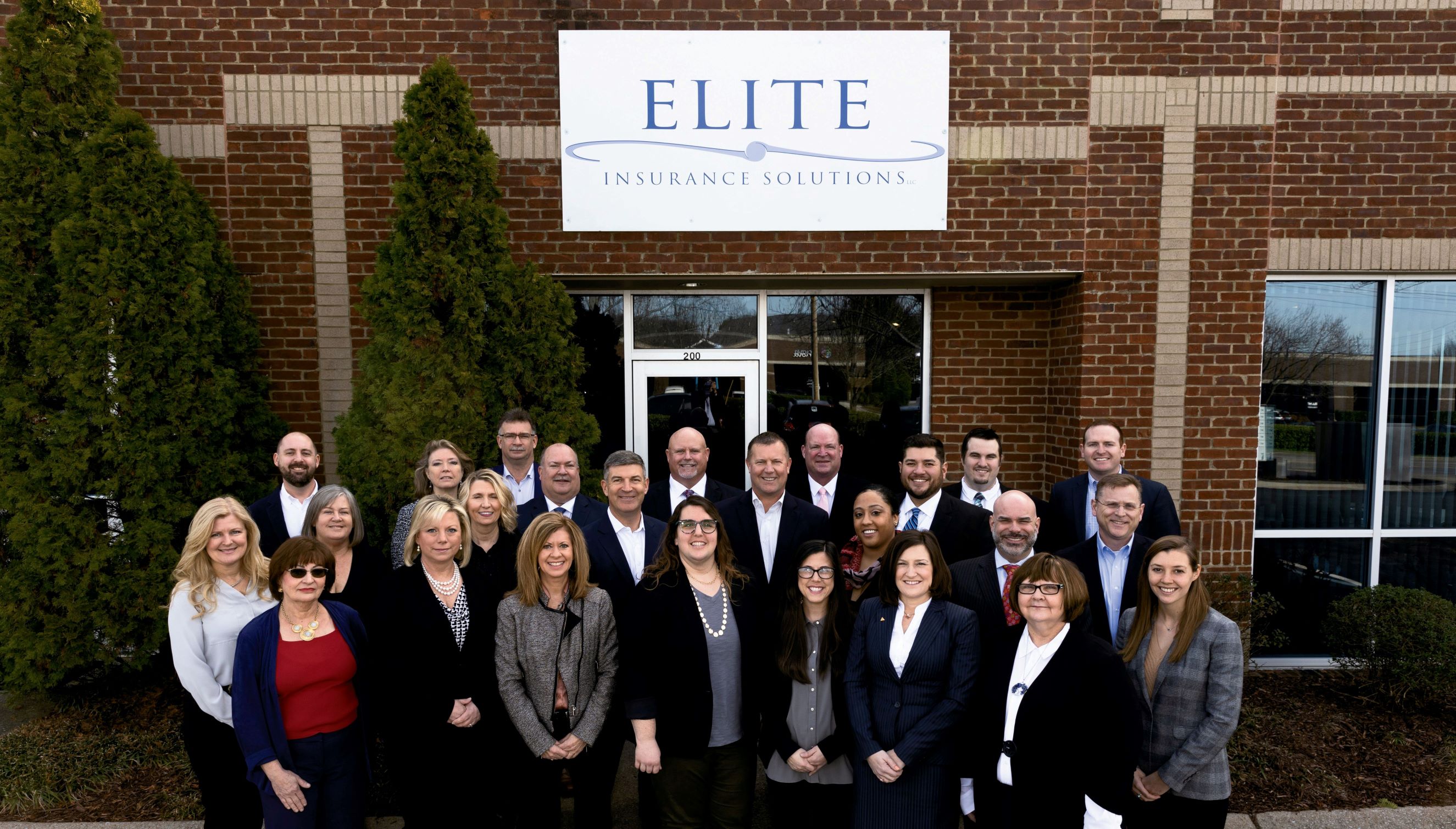In the insurance industry there has long been a disconnect in the process of passing data between agent and carrier, making policy changes slower and more cumbersome for clients who now expect instant results. Technology holds the key to the solution, but only if both parties work together to address the difficulties on each side.  Jerry Fox, VP of Carrier Relations at HawkSoft, has seen technological innovation shape the insurance landscape for both agents and carriers over his nearly 40 year long career in the industry. In addition to running his own agency, Jerry has worked extensively on national user organizations for technology vendors, agent associations like ACT and AUGIE, and consulting with carriers. Here at HawkSoft, he continues to leverage his industry relationships and expertise to drive technological advancements and strengthen the partnership between agents, carriers, and the insured.
Jerry Fox, VP of Carrier Relations at HawkSoft, has seen technological innovation shape the insurance landscape for both agents and carriers over his nearly 40 year long career in the industry. In addition to running his own agency, Jerry has worked extensively on national user organizations for technology vendors, agent associations like ACT and AUGIE, and consulting with carriers. Here at HawkSoft, he continues to leverage his industry relationships and expertise to drive technological advancements and strengthen the partnership between agents, carriers, and the insured.
Due to his unique position with one foot on either side of the agent/carrier divide, we asked Jerry to share his thoughts on how both sides can work to build solutions that will bridge the gap. “It’s a symbiotic relationship,” he says. “Without the agents, carriers won’t survive and without the carriers, agents won’t survive. Neither party can think only about what’s best for themselves. If a carrier puts out a product that makes things easier for them but ruins the agent’s workflow, for example, agents will write their business elsewhere. On the other hand, if they create tools that will help an agent sell, it might not benefit them directly, but it will benefit them as agents write more policies for them.”
“Without the agents, carriers won’t survive and without the carriers, agents won’t survive. Neither party can think only about what’s best for themselves.”
He shared a few ideas on what each party can do to push this relationship—and the technology that connects them—to new heights.
What carriers can do
- Improve the data transmission process
- Work together to create standard systems all carriers will use
What agents can do
- Join advocacy groups to create one voice to carriers
- Build relationships of trust with both client and carrier
What carriers can do
Improve the data transmission process
Like the rest of the insurance industry, carriers are dealing with what Jerry calls “technical debt.” They are reliant on outdated systems that aren’t equipped to provide the client with the instant results that other consumer-facing industries have taught them to expect. The current process of data transmission between agent and carrier is cumbersome and time-consuming. “Right now, the data goes through far too many touchpoints,” Jerry says. “It’s stored by the carrier, transmitted to a mailbox like IVANS and stored there, then transmitted to the agency and stored there as well. Not only does this process take a lot of time, but it presents many access points where data could be vulnerable to third parties.”
In addition, housing data in multiple locations (both on the agency side and the carrier side) leads to data duplication and discrepancy. “With downloads, there are always two versions of the truth,” he says. “Data is truncated when it’s sent over, and when it’s funneled from one format to another some things inevitably get lost in translation. When there are discrepancies, there are always going to be questions on which data is considered correct. So why should the agency take on the work and the risk of storing the data?”
In Jerry’s mind, the carrier is the one who should be responsible for housing and protecting policy data. “In a perfect world the carrier should own protecting and securing the data because they write the policy. What the agent needs is 24/7 access to the data to process transactions for the customer.” He envisions a single source of truth for policy data for both agents and carriers: “My goal is to develop an industry-wide process for 360 degree, real-time transactions where carriers and agents are accessing and manipulating the same policy data through APIs and other more current technologies.
Learn more about HawkSoft's stance on data and our Partner API project in our article about client data.
“My goal is to develop an industry-wide process for 360 degree, real-time transactions where carriers and agents are accessing and manipulating the same policy data.”
Ideally, the agent’s management system would connect them to the carrier’s management system and process a change directly to the policy, so the agent and customer can see the effect immediately on the carrier’s system. This would eliminate the need to send changes through an antiquated mailbox that only processes once a day. “Although the current providers are trying and have developed more relevant real-time technologies,” Jerry says, “slow adoption of newer technology has been a historical problem in the industry.” Agents and agent-led organizations are speaking up about this need for real-time data transmission. This is one of the things Big I’s Agent’s Council for Technology (ACT) advocates for, saying: “For real-time implementation to continue to grow among agencies, we need to achieve more consistency in the real-time transactions that are offered to agencies across carriers and lines of business, coupled with better performance from those transactions.” See more resources from ACT on real-time transactions here.
Agents and agent-led organizations are speaking up about this need for real-time data transmission. This is one of the things Big I’s Agent’s Council for Technology (ACT) advocates for, saying: “For real-time implementation to continue to grow among agencies, we need to achieve more consistency in the real-time transactions that are offered to agencies across carriers and lines of business, coupled with better performance from those transactions.” See more resources from ACT on real-time transactions here.
Elite Insurance Solutions, the 2019 Rough Notes Agency of the Year, is passionate about this project as well. In our recent interview with them, Mike Stansbury impressed upon us the need for a triangle of communication between client, carrier, and agency where all parties receive the same information at the same time. “As independent agents,” he says, “we have to continue to push carriers and tech together to create a seamless experience for the client. If a client is injured in an automobile accident while on the job, they should be able to notify one person. The worker's compensation, the commercial auto, and the agent should all get the same level of information.”
Work together to build standard systems all carriers will use
The goal of carriers and agents accessing the same data is a massive undertaking that will require cooperation and standardization across all carriers and the technology systems they utilize, as well as the management systems on the agency side. “Many agents struggle to create an excellent 24/7 customer experience based on vendor and carrier systems that weren’t designed to play well together,” notes Kitty Ambers, AUGIE ambassador and chief growth officer at AVYST (Rough Notes). “Agents can’t change the system alone—agents, carriers and solution providers need to work together to transmit critical data in a continuous customer journey.”
This is why Jerry is working with Duck Creek and several other carrier technology providers to understand how best to build and utilize the necessary infrastructure to facilitate real-time data transactions. “The carrier vendors have known for a while that the systems need to be rebuilt," he says. "Solutions that were designed to batch process new policies and changes overnight do not meet today's consumer expectations." Jerry's hope is to help vendors work together to create one standard format that works across all carriers and all management systems—for example, a standard API that can be sent to a carrier to request an ID card.
While vendors and carriers realize standardization would help all parties, individualization remains a formidable hurdle to overcome. "Agencies, carriers, and vendors all like to set themselves apart by being unique and independent, which is one of the things that makes our industry great. I like to say that's what puts the "I" in Independent. However, it also inherently makes forming standards very difficult and creates challenges in development. If we can find our way around these issues it would be a win for everyone, including the consumer.”
What agents can do
Join advocacy groups to create one voice to carriers
While carriers and vendors are best positioned to create the necessary technology, they need agents to help them shape it to fit their workflows. Jerry supports a long-held belief by Paul Hawkins, CEO of HawkSoft, that agents know what their software should do more than developers. He adds, “Technology vendors for agents need to understand how agents work in order to build tools that will help them.”
The best way to do this is to join groups that work with technology vendors on behalf of agents. Jerry recommends starting by participating in a user group or committee for your agency management system. These groups, such as HawkSoft User Group (HUG), are usually free or low cost to join and provide invaluable education for both parties—on using the technology for the agent, and on the needs of the agent for the vendor. In fact, Jerry is currently working with HUG as they develop and manage several Customer Advisory Boards (CABs) to help agents be even more closely involved in the development process for new features in HawkSoft. These boards will be selected and managed by HUG to take away any political influence from HawkSoft. This provides free and open discussion from users to express their ideas and thoughts, and helps the HawkSoft development team create the most user-friendly solutions.

HawkSoft founders with agents at the 2018 HUG National Conference in Las Vegas
In addition, agents can join organizations like the Agents Council for Technology (ACT) or the AUGIE Group, which aren’t specific to a management system but focus on pushing technology forward for both agents and carriers on a whole. These groups often have initiatives and resources devoted to technology and carrier relations, such as ACT’s Agency/Carrier Technology resource page, or AUGIE’s Digital Ecosystem initiative. Both organizations are constantly looking for more agents to get involved.
Associations like PIA or Big I, which have organizations in most or all states, are another great way to help carriers, technology vendors, and legislators understand the needs of agents. There are also many organizations specific to regional or local areas, like BIG in California or OIA in Ohio. “Agents can enact the most change when they have a unified voice through an organization or association,” Jerry says. “It helps carriers cut through the noise if they can go to a few larger bodies to hear the agents’ needs, instead of having thousands of agencies telling them thousands of different things.”
Paul Hawkins on a panel with other AMS vendors at the 2019 AUGIE Group meeting
Active participation is key—Jerry warns against what Steve Anderson calls being an association freeloader. “Agent-led organizations are only effective as long as agents are truly leading, not just coasting. Whatever your agency feels strongly about, whether it’s selling a specific type of insurance or using a certain kind of technology, join a group that advocates for that subject and be actively involved. The industry needs your passion.”
“Whatever your agency feels strongly about, join a group that advocates for that subject and be actively involved. The industry needs your passion.”
Build relationships of trust with both client and carrier
While many Insurtech companies are leaping forward in technological advancements, they’re still missing a crucial piece of the puzzle—the client relationship. Jerry takes it a step further, pointing out that mutual trust is the key to that relationship. “Trust is especially vital in insurance,” he says, “which is a product people hope they won’t ever have to use, and if they do it’s during catastrophic circumstances. The customer has to be able to trust the agent to take care of them. The agent needs to trust the carrier to perform their duty and provide the services. The carrier has to trust the agent to write good business. The whole cycle depends on trust.”
This trust includes embracing technology and the changes it brings with it. “In insurance we are trained to be risk-averse,” Jerry observes. “New tools and technologies can be scary because there’s always some risk associated with trying something new. But if we as agents have built trust with the carriers and vendors who create that technology, we can take that step knowing that we’re in good hands with partners whose success depends on our own.”
Not a member of HawkSoft User Group (HUG)?Register now—it's free! |







